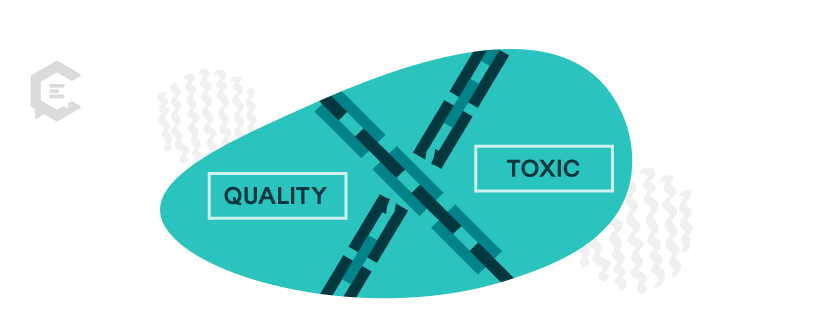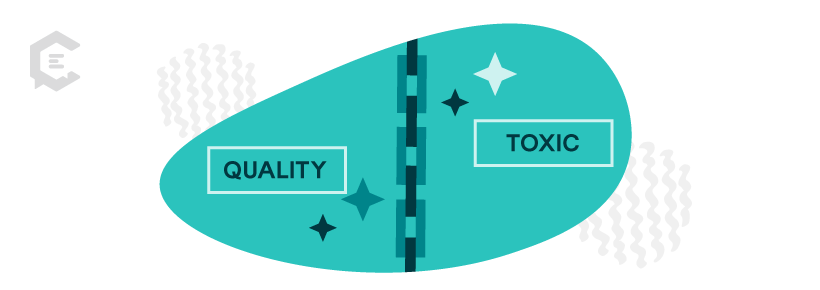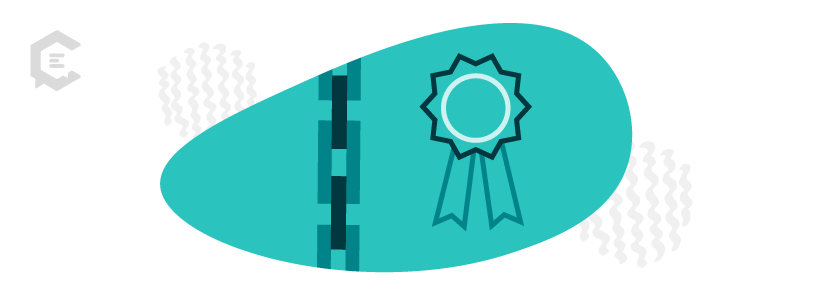Another website links to your site. That’s great, right? This “backlink” points users to your site, which means more clicks to you. Backlinks might even help you climb up search engine results pages. But what’s the difference between quality versus toxic backlinks?
You should be aware that not all backlinks are created equally. Quality backlinks are natural links to your website on high-quality websites.
On the other hand, toxic backlinks are unnatural links to your website on poor-quality websites.
They can signal to users and search engines like Google your site isn’t to be trusted. You may not even be aware they’re out there, but toxic backlinks could cause your site to take a tumble down search results.

Quality vs. toxic backlinks: How they affect your site
It’s wise to regularly audit your website to check for what sites are linking back to it. The good news is that when you find toxic backlinks pointing back to your site, you can take steps to remove them. That way, you ensure only high-quality backlinks represent your website, and you protect your SEO efforts. Here’s what to be aware of.
What are toxic backlinks?
First, what exactly are toxic backlinks? Toxic backlinks indicate both a poor user experience and tell search engines like Google your site’s not credible. Back in the day, link buying was a spammy, get-links-quick scheme to get your site all over the web, including on tons of websites that provided no value to users.
As Google’s algorithm is constantly evolving, at one point, the quantity of backlinks a site had may have meant more than the quality of those links. People would even set up useless websites just so they could sell links on those sites. Then they’d contact unsuspecting website owners who were looking to increase their link total.
But unsurprisingly, Google caught on to the fraud and increased its emphasis on quality for determining search results. Today, Google may penalize your website when you have unnatural links pointing back to your site.
To understand what to look for when identifying quality versus toxic backlinks, Google spells out what it considers to be “link schemes” that it can penalize your website for.
- Paid links, which you exchange money, goods, or services to get
- Links you received by sending someone a free product to write about
- Links featured on sites designed specifically for cross-linking
- Links in the same piece of content that’s spread across multiple sites
- Links in poor-quality content
- Links generated through automated programs or services
- Links on low-quality bookmark or directory sites
- Links in digital press releases
- Links in forum comments
Not all of the backlinks listed above are toxic. To identify whether one is spammy, consider whether the link is natural or unnatural, and if it’s in a high-quality piece of content on a high-quality website.
For example, say you’re releasing a press release about a new restaurant you’re opening. A link to your website in the press release makes perfect sense. But linking random words like “best burger in Phoenix” to your menu and “tastiest soda in Arizona” to your contact page and then sending that press release to every single site that will host it could get you penalized.
The same goes for leaving comments on blogs and in forums. If you read an article and genuinely want to leave a comment, and the widget allows you to enter your website, go for it. But if you’re leaving, “Hi, great article!” comments and linking back to your site on 300 random blogs a day, you’re probably generating a ton of toxic backlinks in the process.
Why quality backlinks matter
First, it’s helpful to first discard the notion that Google is going to reward you just for getting links to your website on other sites. In fact, in February 2021, Google Search Advocate John Mueller said the total number of backlinks pointing to a website is irrelevant to Google.
But…
You still want to get high-quality sites to link back to your website. Why?
- It shows their users you’re a helpful resource
- That can result in more clicks to your site, which can mean more leads and conversions
- Since Google is all about quality, that means quality backlinks could positively influence your search results
What do quality backlinks look like?
Examples of quality backlinks
Remember that quality backlinks are natural, relevant links on high-quality sites. When comparing quality versus toxic backlinks, the difference is pretty apparent.
Quality backlinks might include:
- A link to your blog article as a source in a news article
- A link to your company when your CEO is quoted
- A link to your website on a social media site
- A link to your business website on a review site like Yelp
- A link to your website in a product or service review by a respected blogger
Sometimes a high-quality website will link to yours without you asking. They’ll genuinely be interested in your product, service, or expertise and will cite you as a source or a website their own followers should check out.
Other times, you may seek out quality backlinks on your own.
How to get quality backlinks
Any sound SEO strategy will include backlink tactics. These will support your efforts to create a better user experience for your target audience throughout the web.
Using these strategies will also help you improve trust and credibility with leads and customers.
Ways to get quality backlinks include:
- Guest blogging for a credible site, and linking to your website in your author bio
- Putting out a press release when you have actual noteworthy news to announce
- Connecting with journalists and offering to be a source when they’re creating content that relates to your expertise
- Creating exceptional content (like a study, poll, ebook or article) and sharing it on social media, which exposes it to people who may want to link to it on their own sites
The emphasis is on quality, quality, quality. Your business should never pay for links or try to get linked on spammy websites.
That’s like creating bad PR for your company. Only focus on sites that will represent you well.
Tools to find toxic backlinks
You may be wondering how to find all the websites that are linking back to your site. It’s actually quite easy since there are a number of tools available to help you identify them.
One is Ahrefs’ Backlink Checker. You can try it for free and see some of the sites linking back to your site, then sign up to view all backlinks. Semrush has a similar Backlink Analytics tool.
You can also use Semrush’s Backlink Audit tool to “detoxify your backlink portfolio.” The Backlink Audit Tools assigns a “Toxic Score” to each backlink, so you can see which backlinks are most dangerous for your website.
What should you do with toxic backlinks?
The differences between quality versus toxic backlinks are fairly obvious. But once you identify toxic links, you’ll want to get rid of them.
First, you can reach out to the webmaster of each site that’s providing you with a toxic backlink and ask them to stop linking to your website.
For sites that don’t remove your links, you can use the Google Disavow Tool to upload a file of all the backlinks you want removed from your site. If you use the Semrush Backlink Audit Tool, it will help you prepare the file to submit to the Google Disavow Tool.
Once you’ve submitted your list to the Google Disavow Tool, Google will no longer consider those backlinks when determining your website’s SEO value.
You will need to submit a new report with all toxic backlinks whenever you want to add new links for consideration. Since Google states the Disavow Tool is an “advanced feature and should only be used with caution,” you may want to work with an SEO expert to use this tool and get rid of toxic backlinks.
Optimize backlink efforts for high-quality links
When it comes to quality versus toxic backlinks, there’s a clear solution. It’s an all-around win when high-quality websites link back to your content in a relevant way that helps their users. It benefits their website visitors, and it helps your site. Use Google’s focus on quality to drive your SEO efforts, including your backlink strategy.
Regularly check your backlink portfolio so you can quickly get in touch with toxic backlink website owners and stop them from linking to your site. Work with an SEO professional to update your Google Disavow submission, so you cultivate only high-quality backlinks for your website. Keep up with your backlinks to optimize your SEO efforts.
Need help improving the authority of your site? Talk to a content specialist today about getting high-quality, optimized content developed for your brand.





